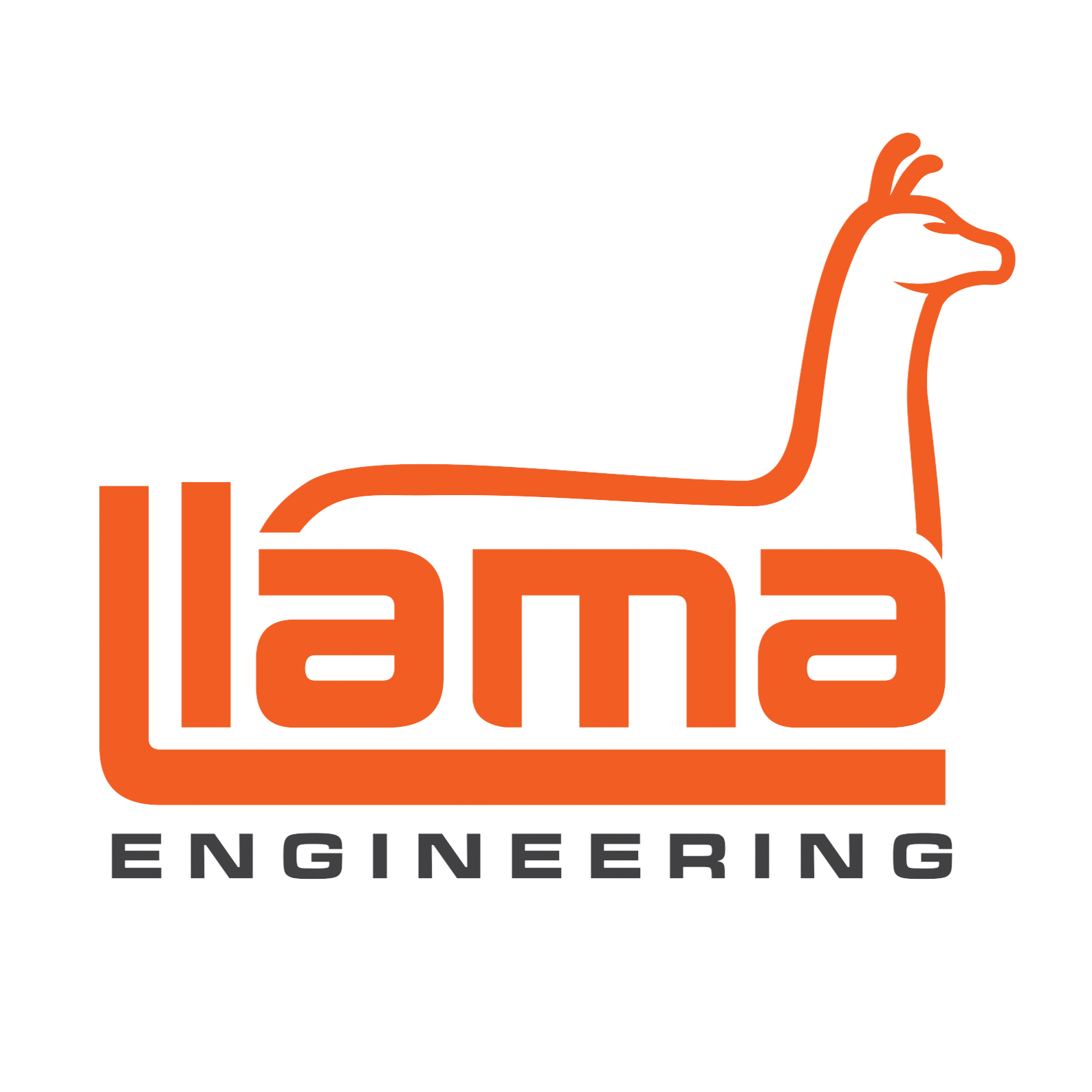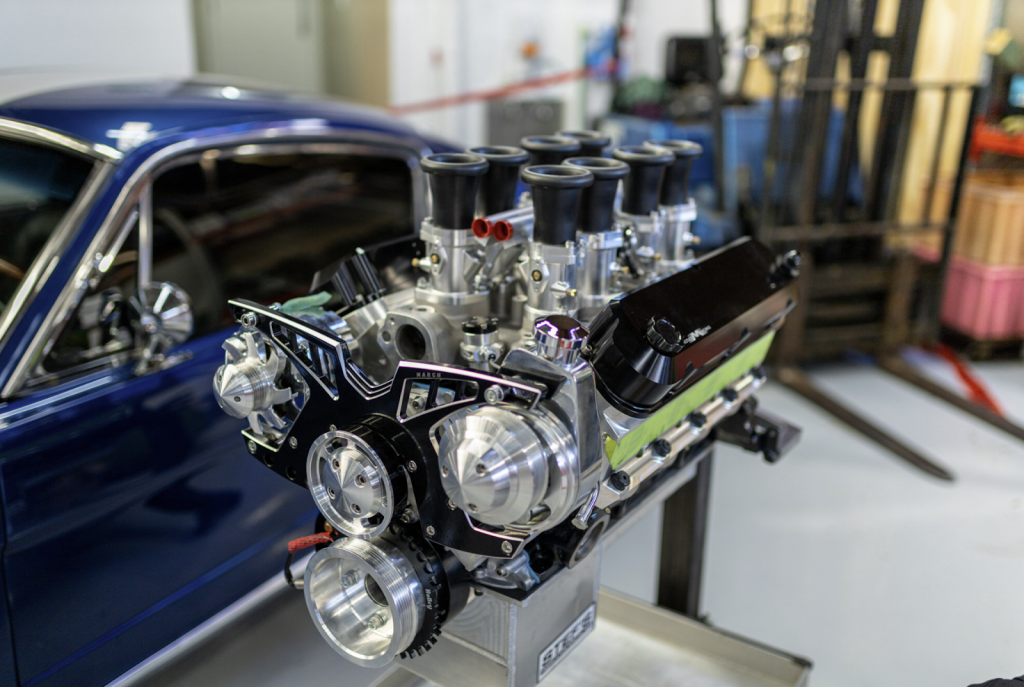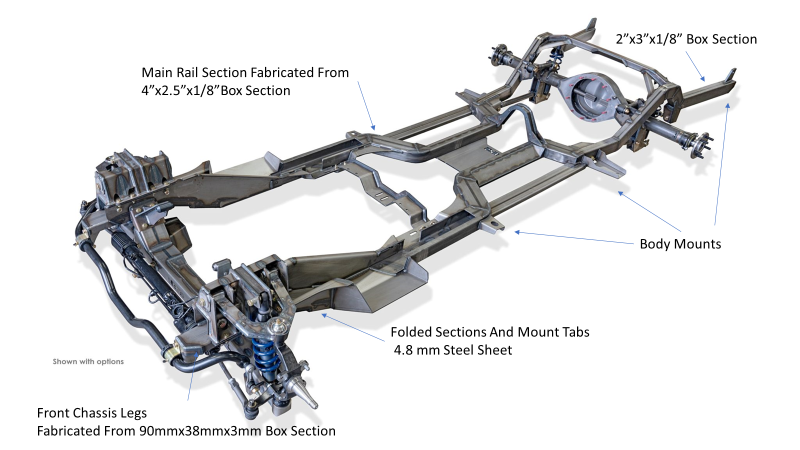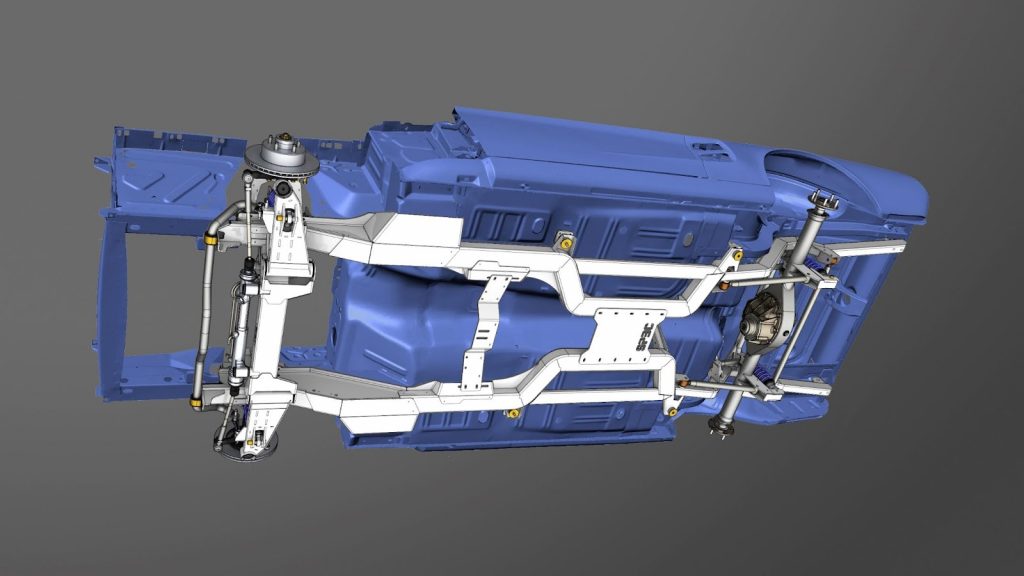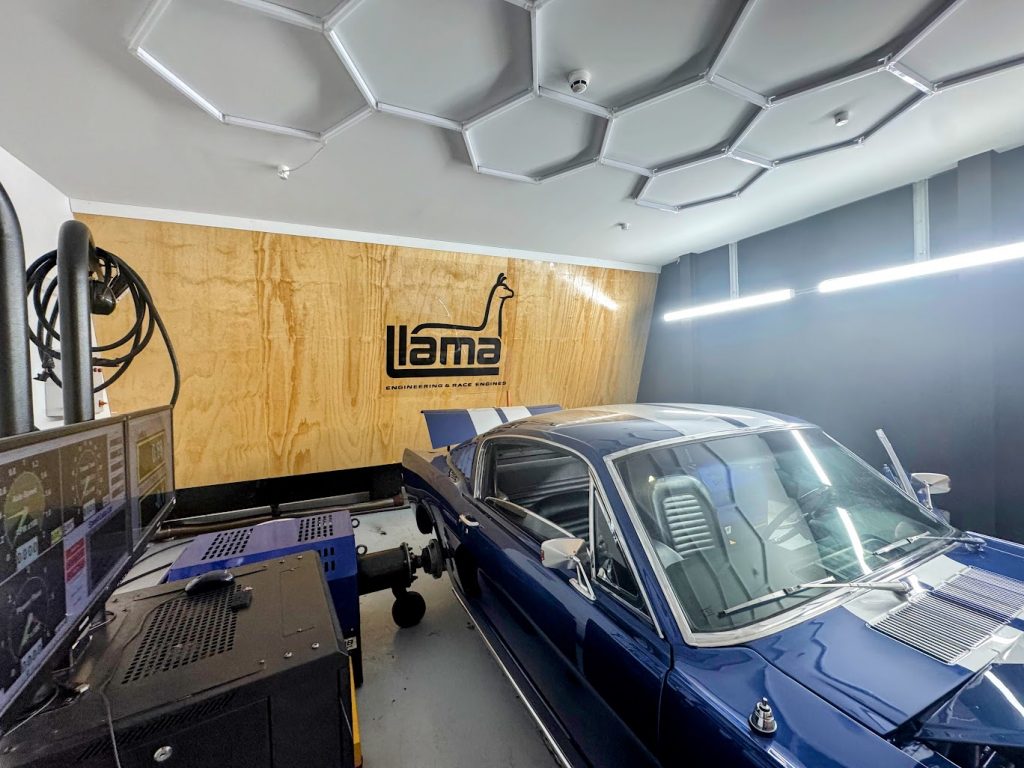
Llama Engineering had the pleasure of resto-modding a customer’s pride and joy, a stunning 1965 Mustang Fastback.
Llama has looked after Dave’s Mustang for many years. Over time we converted the car to fuel injection and recently built a 363ci small block Ford V8 power plant. With the increased power, a set of Willwood disks on all 4 corners helps her stop in time. Dave decided that the vehicle needed an improvement in handling to match the current power of the vehicle, so we set to work.
The factory Mustang unibody and suspension design has a number of issues, especially when trying to bring the car up to today’s standards of ride quality and comfort. There have been multiple attempts to fix these issues over the years with braces, cradles, crossmembers, and connectors, none of which have been particularly successful. The original antiquated steering is top of the list when it comes to parts needing to be updated. Steering rack conversions are available but offer sub-par geometry and ackerman angle with little to no improvement over factory steering.
The factory shock towers also make for an extremely tight engine bay and limit suspension geometry. Bolting new components into factory mounting locations (designed 50+ years ago) offers minimal performance improvement, and mainly only cosmetic appeal.
With many obstacles to overcome, a complete chassis was acquired from Roadster Shop in the USA with “bolt-in” ease of installation. The channelled front frame rail design and bolt on upper suspension mounts are engineered to fit up to the existing factory sub-rails and inner structure and bolt in place. This chassis provides 4 link rear suspension, double A-Arm front suspension with provisions for different engine and gearbox mounts. The solution provides a huge upgrade from the existing 1960’s setup.
For LVVTA certification purposes we needed a copy of the drawings for the suspension and chassis however the supplier declined to provide these. In order to get the build approved by the Technical Advisory Committee (TAC), the custom IFS needed to be reverse engineered and drawn to support the application.
Some remedial work was also required for the chassis as delivered, including bump steer correction – full suspension drawings were included in the application to support this.
A detailed 79 page document was submitted to TAC, approved and we were ready to proceed with assembly. The finished car is an absolute joy to drive, handles like she’s on rails and has plenty of power to keep Dave on the edge of his seat.
